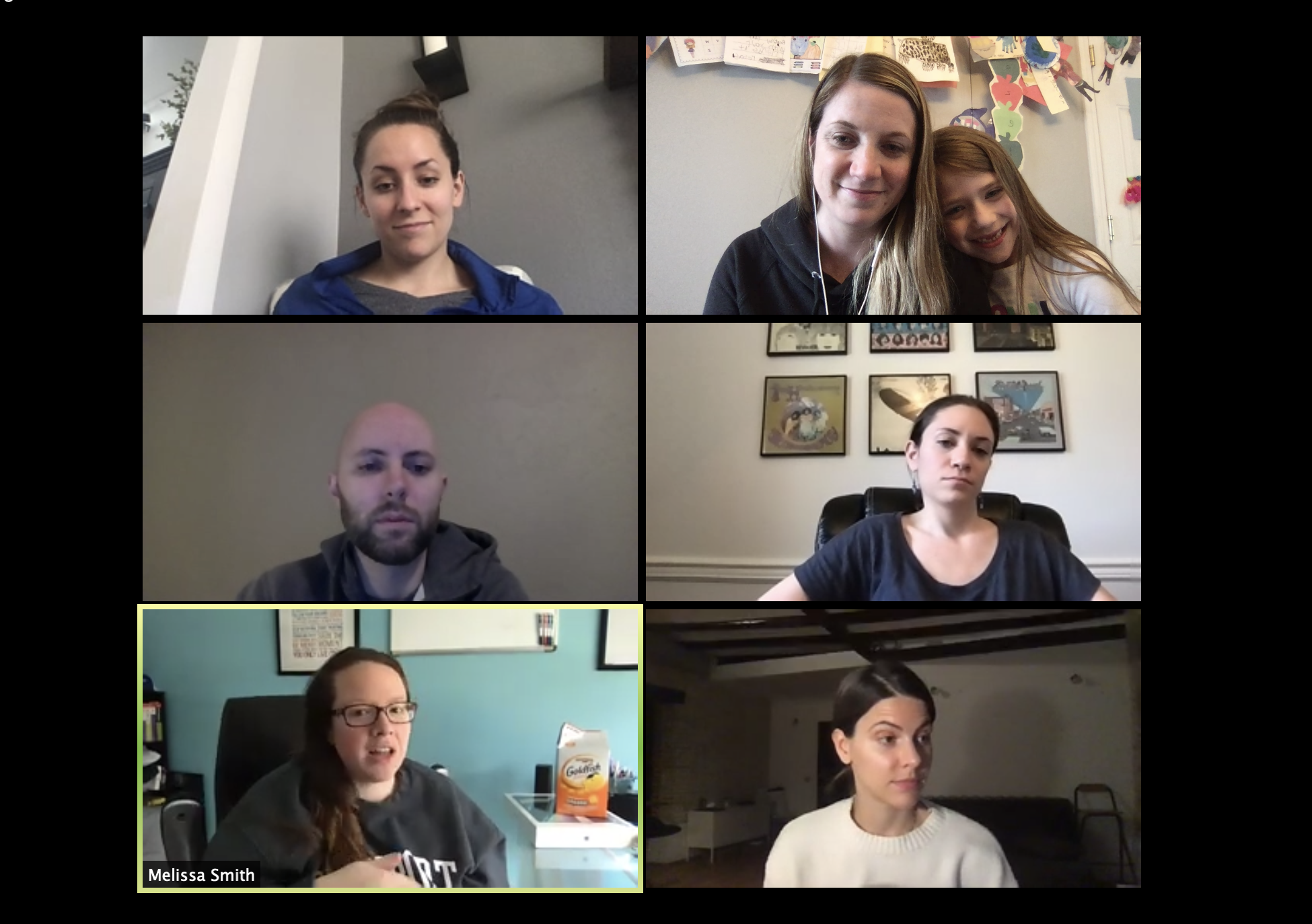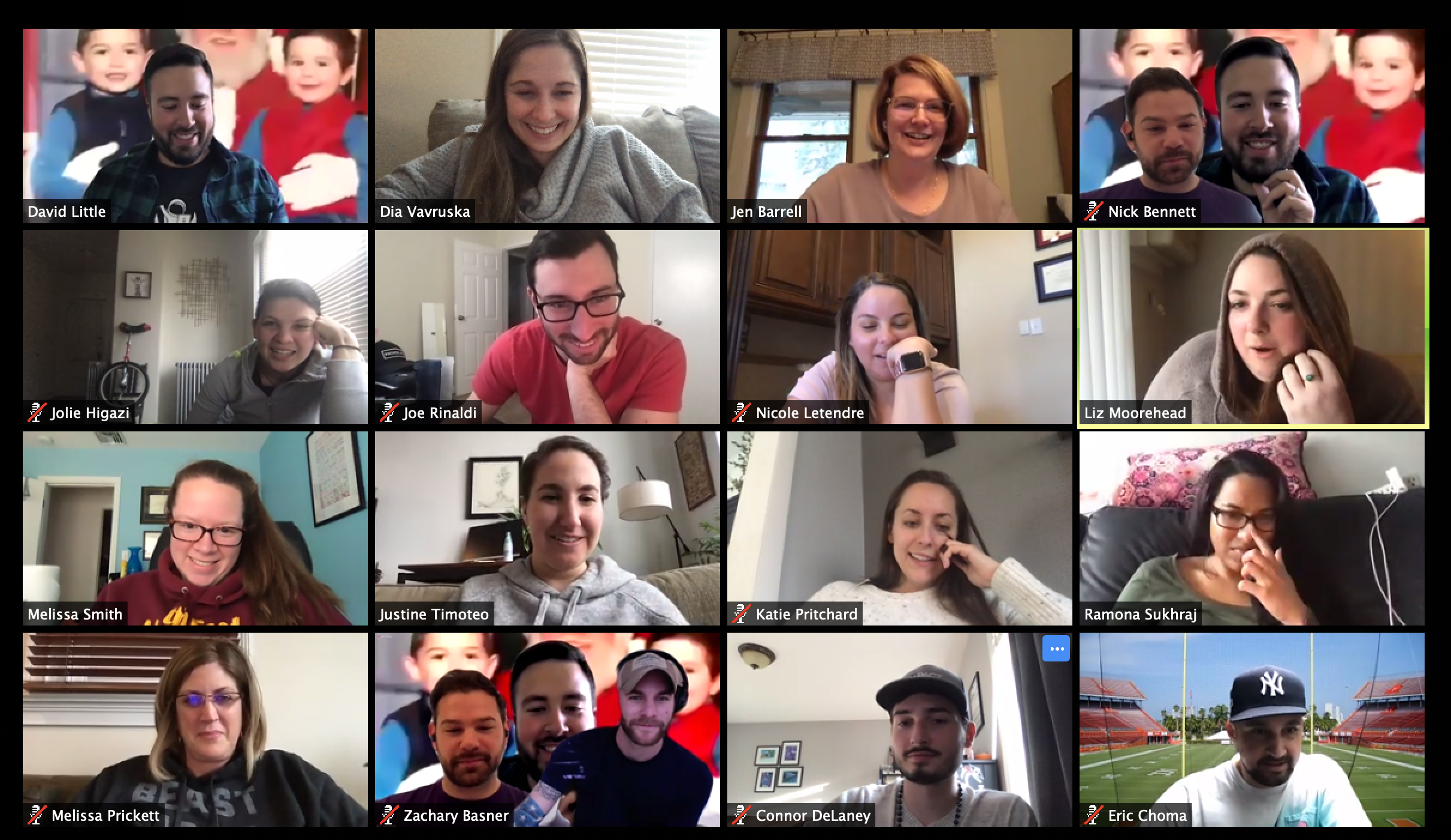Subscribe now and get the latest podcast releases delivered straight to your inbox.
How to create a truly inclusive company culture

Apr 14, 2020

So, you’ve hired team members from different ethnicities and age groups. You’ve taken steps to ensure everyone is avoiding assumptions, and to help team members feel empowered.
But, are there aspects you’ve overlooked?
It’s important to regularly ask yourself and everyone at the company, “Am I able to bring my whole self to work every day?”
Even if one person says no, there’s still work to be done.
You see, having a diverse team doesn’t necessarily mean your company’s culture is inclusive.
What does inclusive really mean?
Contrary to popular belief, diversity and inclusion don’t mean the same thing.
Diversity means a group has representation of the various demographic and societal characteristics that make up a person. Those areas include race, ethnicity, age, gender, religion, relationship status, sexual orientation, and economic status to name a few.
Inclusion, however, is about having a company culture that creates a sense of belonging for everyone, no matter their position at the company or their demographics.
In other words, you can be diverse but inclusive; or inclusive, but not diverse. They don’t come hand-in-hand.
While you may have people of various backgrounds on your team, that doesn’t mean they necessarily feel like they belong.
Unfortunately, oftentimes, there are aspects of a person that you can’t see where there’s unwarranted bias.
There might be some areas you’ve overlooked — family life, working remotely, sexual orientation, and even dietary restrictions.
Many companies that have effectively created an inclusive company culture have found their employees not only saw an increase in productivity and performance, but Harvard Business Review found that those teams were able to solve problems faster.
With the millennial and Gen Z generations being the most diverse in history, there’s no better time than now to truly make sure your culture is inclusive.
Before we move on, it’s important to note this isn’t solely human resources or talent’s responsibility to make your culture inclusive, but something everyone in the company should be working on.
Let’s take a look at what else you and your company can be doing to create an inclusive company culture.
4 ways to make your company culture more inclusive
1. Educating company leaders and removing unconscious bias
Oftentimes people don’t even realize they’re being bias.
What does unconscious bias look like? Here’s a look at just some common examples:
Ageism:
In the workplace, you can find ageism when you hear someone calling a team member who’s just out of college “a baby,” or assuming they’re not experienced or knowledgeable.
This isn’t just bias towards younger generations, but for baby boomers as well.
Younger team members may think older teammates are stuck in their ways or won’t work as quickly as they need them to.
Many baby boomers feel there’s a communication barrier amongst themselves and younger generations. Imagine what could be accomplished if they were able to work together!
Gender bias:
This is when someone judges you based solely on your gender.
For example, if an assertive woman in the workplace can be perceived as “aggressive,” whereas a male with the same attributes is seen as “confident.”
A similar concept of this is “bropropriating” which is when a woman shares an idea that immediately gets turned down and a man can share the same idea minutes later and everyone jumps on board.
Similarity bias:
This bias is around the idea that we enjoy working with individuals who are similar to us. An example of this is when companies only hire individuals who either previously worked at specific companies or attended a certain college or university.
Hold a training for both leaders and employees
To prevent unconscious bias and make strides towards inclusion, it’s important to acknowledge it exists and to educate your company from the top down.
Start by thinking about how diverse your management and leadership team is.
Is it only made up of middle-aged, married, white men? Or does your leadership team consist of men and women from various age, racial, and religious groups? Does it include mothers, fathers, veterans?
Having representation at this level is extremely important in having it in the rest of the company.
I’d recommend having a diversity and inclusion training that brings the issue to the forefront of your company.
If you’re not sure where to get started, check with your local chamber of commerce to see if they offer diversity and inclusion training.
Several months ago, a few members of our team attended a great training sponsored by our local chamber of commerce, where we participated in several discussions and activities to understand bias and perspective.
There was one situation activity involving a red sports car that particularly stuck with us.
For the activity, you’ll want to split your team into groups, and you’ll want to give each group a card containing a group of people. Those groups might include:
- Parents of young children
- Teenagers
- Someone with physical disabilities
- Middle-aged men
- Mothers against drunk drivers
Once everyone is in their groups, you’ll show them a photo of a red sports car and give them a couple minutes to think about how the individuals on their cards would feel towards it
After a couple minutes, have each group act out who they are, and have the other teams guess who they represent.
For example, the parents of young children might act out walking down the street when the red car speeds by saying “slow down; children live on this street.”
Once everyone has gone, ask the entire group, which group had the most accurate assumption of the red car?
Now remember, that’s a trick question because each group’s assumptions were correct based on their individual experiences.
The main goal of the training is to make sure your team understands that everyone has a voice that should be heard, everyone’s opinions are considered, and that everyone feels valued and respected.
2. Create a space for employees to voice their opinions and concerns
You can’t fix something if you don’t know it’s broken.
Whether it’s positive or negative, understanding what is and isn’t working at your company is essential, which is why you need to create spaces where your employees can openly share their opinions and feedback with you.
In respect to creating an inclusive company culture, it’s all about remembering to listen and being open and understanding to your teammates or employees point of view.
Open the channels of communication.
At IMPACT, for example, we’ve implemented quarterly team surveys and monthly employee advisory committee meetings.
These two channels of communication allow our team to provide feedback and give them the forum to address issues.
On our team survey, some of the questions we ask, include:
- What would make IMPACT a better place to work?
- What should we STOP doing?
- On a scale of 1 to 10, how happy are you with your overall employment at IMPACT?
- Would you refer someone to work here? (If you knew the right person)
Once you’ve developed a culture that is built on trust and respect for everyone, your employees will be more open and willing to share their cultures, background, beliefs, and feedback with you. They will even come to you when they’re feeling isolated or even discriminated against.
3. Celebrate employee differences
One of the best ways you can make employees feel included and appreciated is by inviting them to share their lives, backgrounds, or traditions in the workplace.
In the past, for example, IMPACT has had the chance to learn about and celebrate Holi, which is known as the “festival of colors.”
It’s an Indian festival dating back to the 4th century that celebrates love, the triumph of good over evil, and the arrival of spring.

As our team grows, we’ve also learned about meditation and prayer, and the roles they play in our teammates backgrounds and religious beliefs.
This doesn’t just apply to teammates with different ethnic backgrounds but also for those with different sexual orientations, those who are parents and employees working from home.
Furthermore, last year, we were excited to learn about PRIDE month and the LGBTQ community.
Not only did teammates from the community open up a channel to communicate what it means to them, but they were also able to share their experiences with us.
During this presentation, our teammates allowed us to ask questions, creating a dialogue that allowed us to become more knowledgeable.
For employees who are parents, it’s important to make sure they feel like they can share photos or stories of their kids.
Their family is just as important as they are.
Through Slack, our internal messaging tool, we’ve created a channel specifically for parents. We also love seeing our coworkers' children in our video calls or having them visit the office.

4. Make your activities more accommodating
As your team grows and diversifies, it’s important to make sure the activities and events you’re hosting are something everyone can enjoy or participate in.
Even the simplest act of accommodating a teammates dietary restrictions can go a long way.
There’s nothing worse than having a welcome breakfast for a new team member who can’t eat gluten and all you ordered was bagels.
When onboarding new team members, ask them if there are any dietary needs you should be aware of.
At IMPACT, we’re able to track that information within our HR platform Zenefits. This lets us easily identify who on our team is vegetarian, vegan, gluten-free, anyone who has a food allergy, or any other dietary restriction.
When planning events we’re able to easily reference that information and then reach out to them with alternative options.
Planning team activities isn’t easy either. Making sure everything you’re planning is inclusive is even more difficult.
While the goal of the activity may be to show appreciation and bond, if you’re not thinking about all of the logistics, your team members might actually feel the opposite.
A great example would be planning a company picnic or outing. Even picking a day and time can pose challenges. You also have to think about whether or not you’re inviting spouses and children.
If you schedule it on a weekend or weeknight, you put your employees in the position of choosing between their family, religious obligations, and team building. Consider reaching out to your team members to find a date that works best for everyone.
And don’t forget to give your team members options when planning activities.
Not everyone might want to participate in a specific activity.
A few years back, while planning a team outing at a local ropes course, we made sure to look for a place that had other activities on premise, allowing those afraid of heights or with physical disabilities the option to go bowling or to check out the arcade.
Taking a couple extra minutes to find alternatives and to accommodate team members can go a long way and it will make your team even closer.
With more than 50% of our company working remote, including them is extremely important as well.
It’s about making sure they don’t feel forgotten. With more of us working from home due to COVID19, making sure those team members don’t feel isolated or alone is key.
In this digital age, it’s easy to put measures in place to make sure everyone stays connected, while also allowing teammates to build connections outside of work.

Using video conferencing tools like Zoom, we’ve been able to implement virtual happy hours and fitness groups, as well as our spin on the TV show MTV Cribs.
We’ve also utilized the tool Donut, which is a Slack integration that allows us to regularly randomly pair groups of 4 teammates to get together for a virtual coffee or lunch chat.
Building connections amongst your team has never been more important and it will have a huge impact on the happiness and success of your team.
Inclusion isn’t just an initiative for HR
Diversity and inclusion should be built into your company culture.
It might not be a smooth ride, there will definitely be some challenges, but working as a team to create a culture where everyone is appreciated and valued will go a long way towards increased retention, performance and productivity.
As your company grows, remember to consistently review your processes around hiring and retaining employees, address employee engagement especially for underrepresented employee groups, and to always find new ways to make your culture more inclusive and diverse.
Remember, you don’t have to do it alone. Consider putting together a committee of employees who are passionate about ensuring your culture is inclusive to everyone.


Order Your Copy of Marcus Sheridan's New Book — Endless Customers!